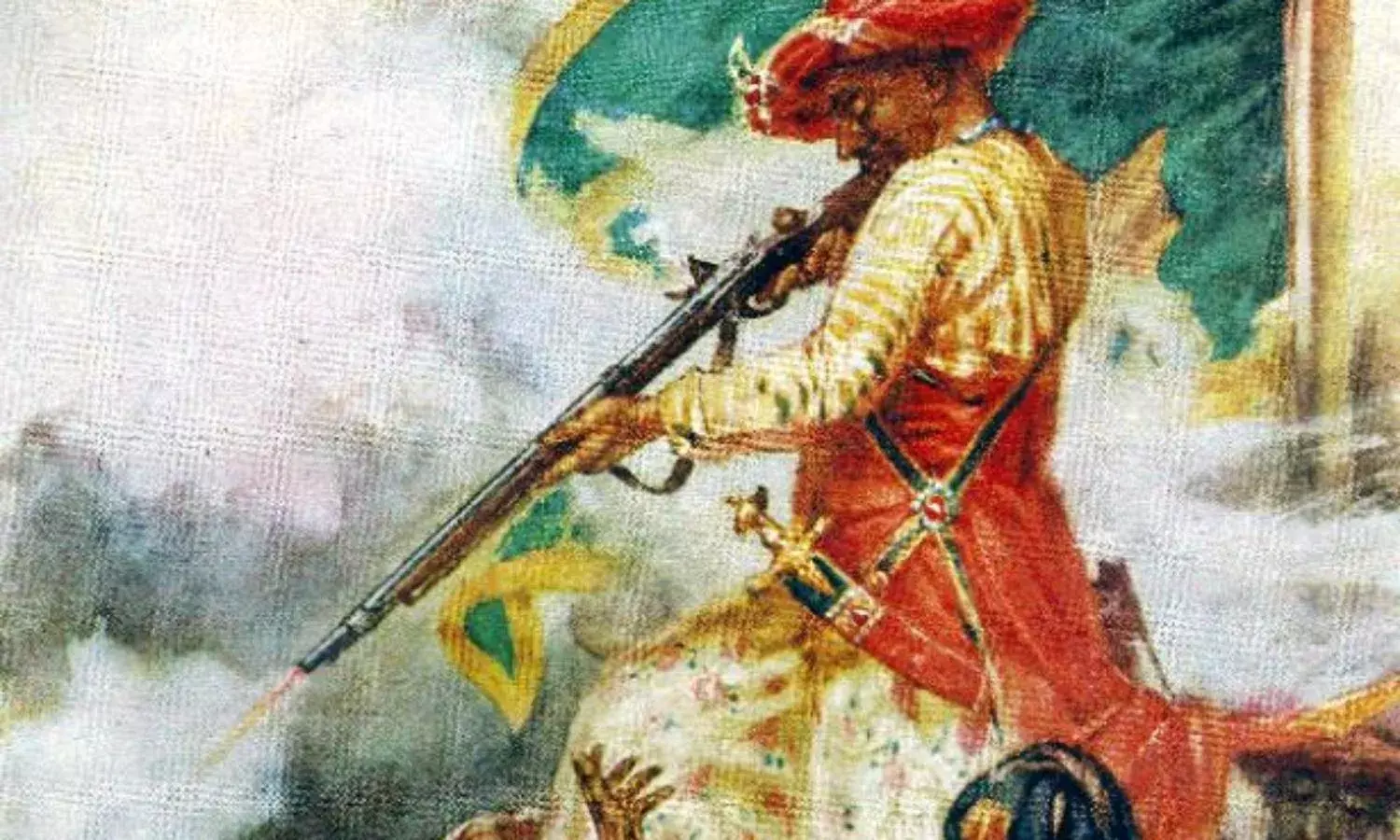Cubs of the Tiger: Tipu Sultan's Descendants in the Calcutta Streets
Some streets tell unhappy tales of prince turned paupers

Walking by the Prince Anwar Shah Road, Lower Circular Road, Park Circus, Theatre Road, Dharamtalla Street, Lenin Sarani and other lanes of Chowringhee or Tollygunge in Kolkata, you come across some shabbily dressed persons with such names as Shahzada, Raja, Nawab and Sultan.
They are neither princes nor sultans. But they have blue blood running in their veins. So what if they are poor? They still feel immense pride in saying they are living descendants of Sultan Fateh Ali Sahab Tipu, the fallen Tiger of Mysore.
Most of Tipu Sultan’s direct descendants now living in Kolkata are engaged in odd jobs like pulling rickshaws, repairing cycles, or as electricians or tailors.
They celebrate his birthday in Kolkata on November 20 every year. Tipu Sultan’s birthday often creates hullabaloo in Bangalore and Mysore, as the Karnataka government refuses sometimes to celebrate it, trampling on the sentiments of those who still admire him, and justifiably so.
In 2018, the descendants of Tipu Sultan in Kolkata congregated at the Calcutta Press Club to make plans to create a statue of Tipu in the town, and also restore mosques raised in his memory in yester years.
The West Bengal government was very supportive of these plans. The government of Karnataka must take a page from its book, as it is less inclined to immortalise the hero who died fighting the British East India Company on May 4, 1799 at Serinagapatam near Mysore.
Cubs of the Tiger Exiled to An Unknown Land
When the entire family of Tipu Sultan came to Calcutta in 1805-06, the capital of the East India Company was still in the making. Three marshy, boggy, jungle covered and mosquito infested villages – Govindapur, Suttanuti and Kalikata – were slowly taking the shape of a city.
The Company forced the royal family of Mysore to move to Calcutta as they were opposing it. As Tipu Sultan’s children were minors in 1799, there was no one to effectively fight the British and prevent them exiling the family.
When they landed in Calcutta, they found they could neither speak nor understand the local language, Bangla. Here a very interesting question crops up. Why was the family of Tipu Sultan banished (with annual pension, of course) to an altogether new and inhospitable place? The answer lies in the extreme shrewdness of the Firangis, the British.
They were the third Muslim royal family to be exiled to the capital. Nawab of Awadh Wazir Ali Khan was first to come, in 1799, and Wajid Ali Shah, also of Oudh, followed in 1856 with almost his entire family, except the chief queen Begum Hazrat Mahal.
Today the cubs of the Tiger are fast vanishing from Kolkata. The total number of direct descendants of Tipu Sultan now living in Kolkata is only about 45. Many members left Kolkata over the decades. Where to, nobody knows! Some are believed to have gone to East Bengal (later East Pakistan and now Bangladesh).
Tipu Sultan’s fourth son Sultan Muhinuddin, in a charcoal sketch by James Hickey, editor of India’s first newspaper, Hickey’s Bengal Gazette
Seven of Tipu’s 12 sons had no surviving male heir. Of the five sons who did, record is found of only two: the princes Muniruddin and Ghulam Muhammad.
The Company shifted all 12 sons of Tipu Sultan and close relatives numbering about 300 from Serinagapatam to Calcutta. Altogether nearly 2,897 people came to Calcutta from Mysore. The reason was the same as with the nawabs – the families of vanquished rulers must stay away from their kingdoms so no counter uprising takes place.
Besides, in an extremely remote land, they could hardly have their friends nearby. They would be uprooted, unknown and common people among those they did not know and from whom they could hardly expect any help.
When the East India Company took possession of the jewellery of Tipu Sultan’s eldest daughter Fatima Begum, which had been sent to Fort William in Calcutta by sea, it needed six bullocks to carry them. Today, her descendants live in hutments in Calcutta.
Copy of original letter describing the gems of Fatima Begum, Tipu Sultan’s eldest daughter. The letter was sent to Edward Wood, Chief Secretary to the Government (EIC) on July 10, 1820
Just as the Company was merciless to Tipu’s family, so the Government of India ignored them for decades together. The Karnataka government also remained aloof.
His family members have been living in Kolkata for the last 214 years. Most of them live in squalor, speak Bangla and are the average aam aadmi (ordinary folk) of the city.
The Mysore Family, as they were known in 1805, were first given residences and lands in an area surrounded by dacoits and thick jungles, known as Rasa Pagla. There were some British bungalows standing there. Now this area is known as Tollygunge, one of the elitemost pockets of Kolkata where the film studios are located.
In 19th century Calcutta, land was abundant. Members of the royal family of Mysore started acquiring lands in and around Tollygunge using the pension they received from the Company. Then some of them started purchasing plots in other parts of Calcutta, which was now gaining the shape of a big city.
Government Place East, Calcutta in the 1880s
Till 1947 these family members were doing relatively well. But their financial status plummeted suddenly after that. Today, they can be found repairing the tubes of bicycles or working as barbers in the lanes and bylanes of the City of Joy, only to tell tales of their plight.
Their poverty, however, does not deter them from celebrating the birthday of Tipu Sultan, the Tiger of Mysore. At these functions a photograph of the Mysore sultan, “A Sun in splendour in the centre in a green backcround” invariably figures.
In a portrait from around 1790



